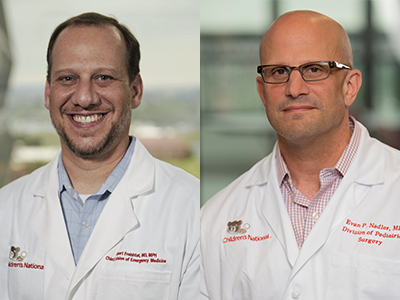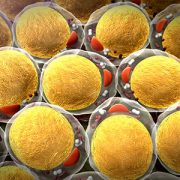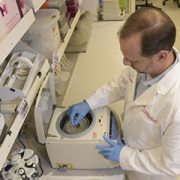Two Children’s National spin-outs join Johnson & Johnson–JLABS

AlgometRx, which joins JPOD @ Philadelphia, was founded by Julia Finkel, M.D., pediatric anesthesiologist and director of Pain Medicine and Research at Children’s Sheikh Zayed Institute.
AlgometRx and Adipomics, two companies that spun out of innovations discovered at Children’s National Health System, have been selected by Johnson & Johnson Innovation – JLABS to join JPOD @ Philadelphia and JPOD @ Boston, respectively.
JLABS is a global network of no-strings-attached incubators for innovative companies from across the pharmaceutical, medical device, consumer and health technology sectors. Start-up companies are free to pursue their own research priorities independently, with access to state-of-the-art facilities to develop new drugs, medical devices, precision diagnostics and health technologies for people around the world.
Both companies got their start at the Sheikh Zayed Institute for Pediatric Surgical Innovation at Children’s National. The Institute focuses on research and innovation that can improve health for children everywhere.
AlgometRx, which joins JPOD @ Philadelphia, was founded by Julia Finkel, M.D., pediatric anesthesiologist and director of Pain Medicine and Research at Children’s Sheikh Zayed Institute. The AlgometRx device is a first-of-its-kind platform technology that aims to objectively measure pain intensity, type and drug effects in real time by capturing a digital image of a patient’s pupillary light response and applying a series of proprietary algorithms to various characteristics.
AlgometRx is designed to provide an objective pain measurement that aims to help physicians select the correct analgesic class of drug and dosage. By optimizing pain assessment, drug selection and drug management, AlgometRx aims to impact the opioid epidemic and the monitoring and management of Opioid Use Disorder.

Adipomics, which joins JPOD @ Boston, was co-founded by Robert Freishtat, M.D., M.P.H., senior investigator in the Center for Genetic Medicine of the Children’s Research Institute and chief of the Division of Emergency Medicine at Children’s National, and pediatric surgeon Evan P. Nadler, M.D., co-director of the Obesity Program and director of the Bariatric Surgery Program at Children’s National.
Adipomics, which joins JPOD @ Boston, was co-founded by pediatric surgeon Evan P. Nadler, M.D., co-director of the Obesity Program and director of the Bariatric Surgery Program at Children’s National, and Robert Freishtat, M.D., M.P.H., senior investigator in the Center for Genetic Medicine of the Children’s Research Institute and chief of the Division of Emergency Medicine at Children’s National. Adipomics was founded with the aim to address the global epidemic of obesity-related diseases including Type 2 diabetes and cardiovascular diseases. World health experts predict that one billion people worldwide will be obese by 2030.
Drs. Nadler and Freishtat discovered that exosomes released from fat cells (adipocytes) carry genetic material that can mediate various diseases related to obesity. Through their research, they developed a proprietary method that aims to detect how obesity affects an individual patient’s metabolism before the onset of overt disease. Adipomics aims to create the first non-invasive, “anticipatory medicine” diagnostic that detects risk for obesity-related diseases prior to the onset of clinical signs or even biochemical abnormalities. If successful, this predictive methodology would enable treatment much earlier in the disease process, which is likely to improve effectiveness.
A recent news release from Children’s National provides more details on these innovations.
As organizations that share a commitment to improving the pace of healthcare innovation, Children’s National and Johnson & Johnson Innovation – JLABS also recently announced their collaboration to launch JLABS @ Washington, DC, a 32,000-square foot facility to be located at the new Children’s National Research & Innovation Campus in Washington, D.C. The JLABS @ Washington, DC will have the capacity to house up to 50 pharmaceutical, medical device, consumer and health technology companies that are aiming to advance the development of new drugs, medical devices, precision diagnostics and health technologies, including applications in pediatrics. The campus is located on a 12-acre portion of the former Walter Reed Army Medical Center campus in the nation’s capital and is slated to open in 2020, coinciding with the 150th Anniversary of Children’s National Health System.









